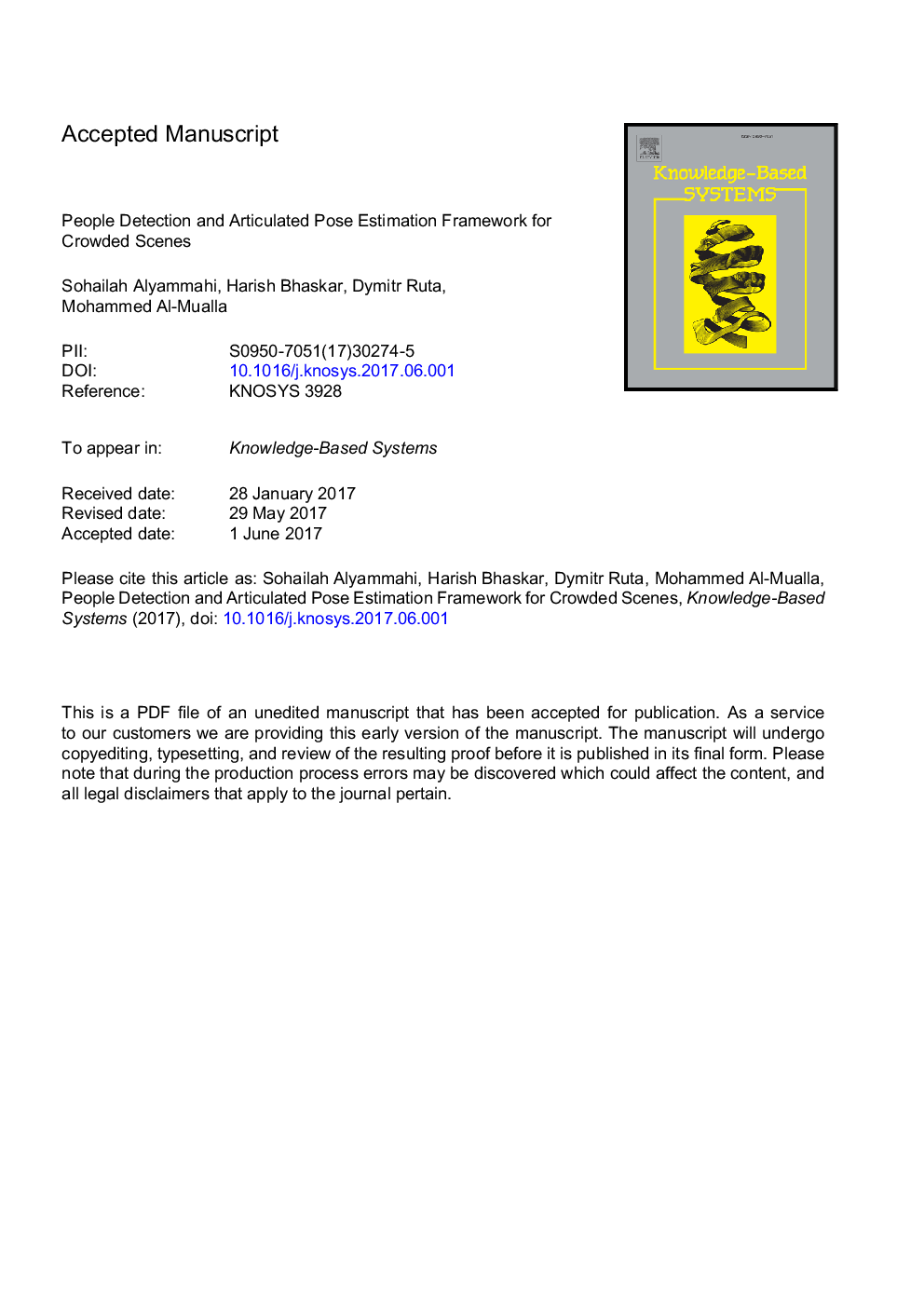| Article ID | Journal | Published Year | Pages | File Type |
|---|---|---|---|---|
| 4946086 | Knowledge-Based Systems | 2017 | 57 Pages |
Abstract
In this paper, we propose a novel articulated pose estimation framework for the simultaneous detection of the human as a whole and their constituent body parts in crowded scenes. The model uses a single discriminative classifier that searches for dependent limbs thereby alleviating the independent inference limitation of other state-of-the-art models. The proposed framework is a hierarchical model that detects humans at both macro and micro levels by fusing global and local detectors. The proposed methodology is validated using a publicly available crowd dataset captured indoors in a sports stadium. Detection results are assessed using the percentage of correctly localized parts (PCP) evaluation metric and compared against competing baselines. Our experimental results report mean detection accuracy of 85% for the global upper body, 95% for the head, 82% for the torso, 71% and 60% for upper and lower arms respectively. A systematic analysis of results also verifies that the proposed model outperforms the state-of-the-art models in terms of detection rate, accuracy and computational complexity.
Related Topics
Physical Sciences and Engineering
Computer Science
Artificial Intelligence
Authors
Sohailah Alyammahi, Harish Bhaskar, Dymitr Ruta, Mohammed Al-Mualla,
